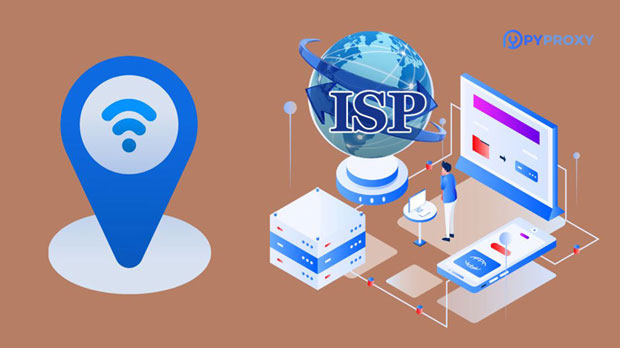When it comes to online operations, privacy, security, and speed are top priorities for professional users. Many businesses and individuals rely on proxies to mask their online activities, access restricted content, or maintain anonymity. Free proxies have been a popular option for users on a budget, but the question arises: is it time for professional users to transition to paid proxy services? In this article, we will explore the key factors that determine whether this switch is necessary, discussing the advantages and disadvantages of both free and paid proxies. Understanding Proxies: Free vs PaidProxies act as intermediaries between a user and the internet, masking the user's real IP address while routing traffic through a different server. This technology is widely used for various purposes, such as bypassing geographical restrictions, scraping data, enhancing privacy, or improving security.Free proxies are typically offered by providers without charge, but they come with certain limitations. For instance, free proxies might be less reliable, slower, and potentially riskier in terms of security. On the other hand, paid proxies are professional services that offer dedicated infrastructure, faster speeds, better security, and more advanced features like IP rotation and customer support.Key Factors for Professional UsersFor professional users, such as businesses or individuals in research, data scraping, or cybersecurity, the choice between free and paid proxies hinges on several critical factors: speed, security, reliability, and customer support. Let’s dive deeper into these aspects.1. Speed and ReliabilityOne of the biggest challenges when using free proxies is their inconsistency. Free proxies often suffer from congestion due to high user traffic, leading to slow internet speeds, increased latency, and unreliable performance. This issue can be particularly detrimental for professional users who rely on quick data retrieval or seamless access to online platforms.Paid proxies, on the other hand, usually guarantee faster speeds and better uptime. With dedicated resources and more robust infrastructure, paid proxy services offer a consistent experience with minimal downtime and faster connections, which is crucial for tasks like web scraping, SEO analysis, or accessing geo-blocked content.2. Security ConcernsSecurity is one of the most significant concerns when using proxies, especially for businesses that handle sensitive information. Free proxies often lack robust security measures, leaving users vulnerable to various threats like malware, phishing attacks, or data interception. These free services may also log user activity, compromising the very privacy that proxies are supposed to protect.In contrast, paid proxies typically come with encryption protocols that safeguard your data. Trusted paid proxy providers ensure that user traffic is not logged or shared with third parties, offering a much higher level of security and privacy. For professional users who need to protect sensitive data, such as financial transactions or proprietary business information, security is a crucial consideration.3. Geographical Restrictions and IP RotationFree proxies are often limited in terms of location options. Users might only have access to a small pool of IP addresses, which can lead to geographic targeting issues. In cases where users need to access content from specific countries or regions, this can be a significant limitation.Paid proxies, however, offer a wide range of IP addresses spread across various countries and regions. Additionally, many paid services provide features like IP rotation, where users can switch between different IPs automatically, reducing the likelihood of getting blocked by websites. For professional users involved in tasks like data scraping or bypassing geo-restrictions, access to diverse and frequently rotating IPs is essential for success.4. Customer Support and TroubleshootingWhen using free proxies, support is often limited or nonexistent. In case of technical issues, users are left to figure things out on their own, which can result in wasted time and frustration. Since free proxies are not tailored to professional users, troubleshooting can be difficult, and downtime may not be resolved quickly.Paid proxy services, on the other hand, offer dedicated customer support to address any technical issues promptly. Whether it’s a connection problem, configuration issue, or a request for more advanced features, professional users can rely on customer service to provide timely solutions. The availability of technical support can be a game-changer for users who rely heavily on proxies for their daily operations.5. Scalability and CustomizationAs professional operations grow, the need for more proxies or custom solutions arises. Free proxies are rarely scalable or customizable. If your needs exceed what is available with a free service, you might find yourself limited in terms of the number of proxies or the features you can use.Paid proxies, in contrast, often offer scalable plans to suit different levels of usage. Whether you need more IP addresses, additional bandwidth, or advanced features like dedicated proxies, paid services can provide flexibility and customization. This scalability is essential for businesses or individuals whose needs evolve over time.Cost ConsiderationsWhile the advantages of paid proxies are clear, the cost is a valid concern for many users. However, the price of paid proxies often reflects the quality of the service. For businesses, the added cost is often a small price to pay for the improved speed, security, and reliability that paid proxies offer.Free proxies might seem appealing due to their zero cost, but the hidden costs of poor performance, security risks, and limited features can end up costing more in the long run. For professional users who rely on proxies for critical business functions, the investment in paid services is often justified by the benefits.ConclusionIn conclusion, while free proxies might suffice for casual or low-stakes users, professional users should strongly consider switching to paid services. The advantages in terms of speed, security, reliability, and support far outweigh the initial cost. For businesses or individuals who rely on proxies for important tasks such as web scraping, data analysis, or accessing restricted content, the investment in a paid service ensures optimal performance and peace of mind.For professional users, a paid proxy service is not just a luxury—it’s a necessary tool for enhancing online efficiency, maintaining security, and staying competitive in a fast-paced digital world.
Aug 07, 2025


































































